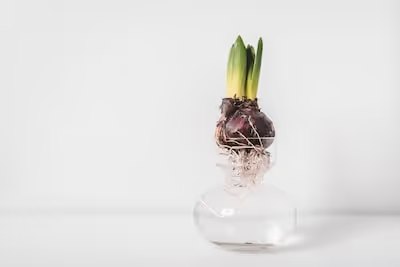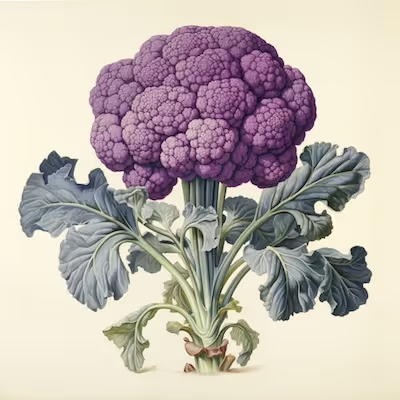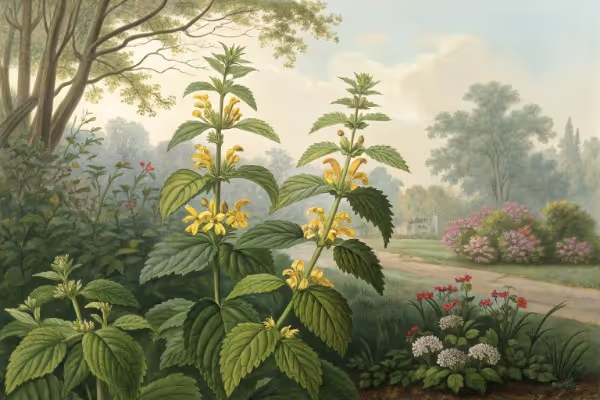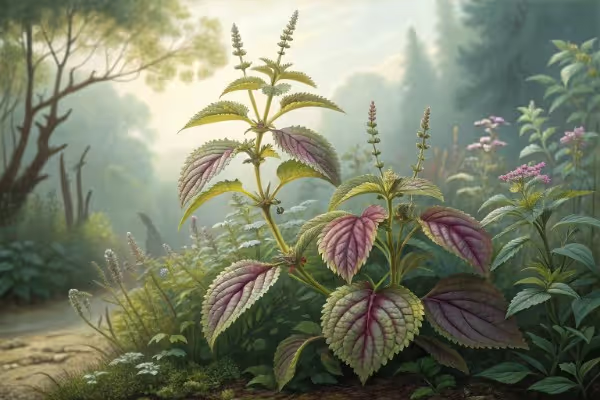Growing Cantaloupes: Expert Tips for a Juicy Harvest
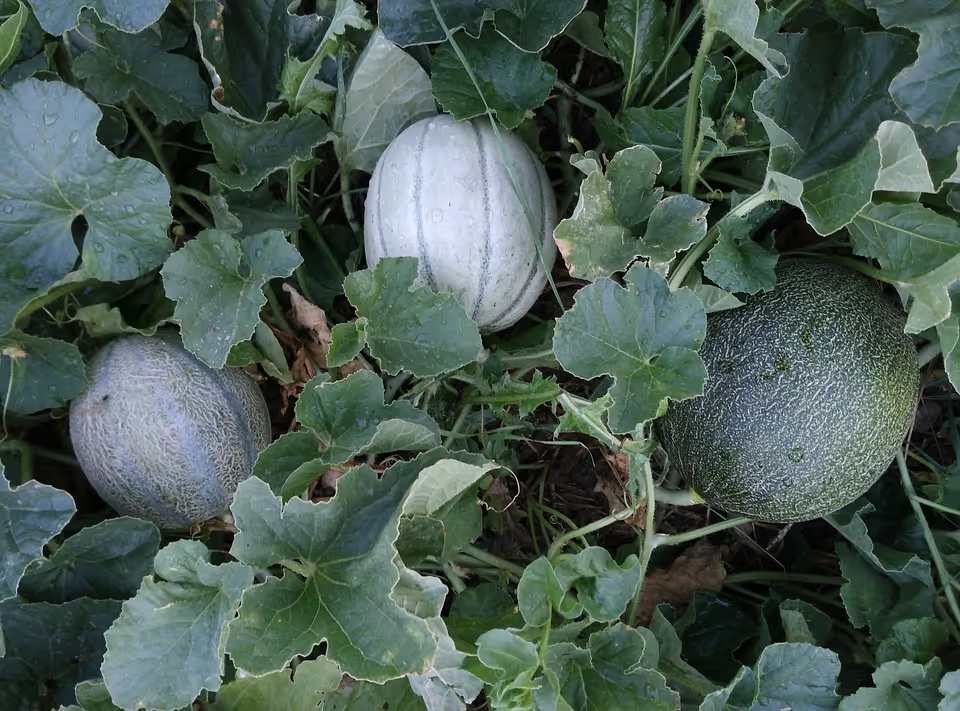
Growing Cantaloupes
Growing cantaloupes starts best in warm soil—wait until temperatures hit 70°F before planting cantaloupe seeds outdoors. Choose a site with full sun and plant seeds about one inch deep, spacing them 18 to 24 inches apart for hearty growth. For maximum flavor and juicy fruit, enrich your soil well—read on to master the art of cultivating sweet cantaloupes from vine to table.
Cheatsheet: Expert Moves for Mouthwatering Melons
🌞 Select Sun & Soil
- Full sun: minimum 8 hours daily
- Soil temp: ≥70°F (21°C) for germination
- pH: 6.0–6.8
- Enrich with compost before planting
🌱 Sowing & Spacing
- Direct sow after last frost
- Rows: 4 ft (1.2 m) apart, hills: 3 seeds/hill, 24 in (60 cm) apart
- Thin to strongest 1-2 seedlings/hill
💧 Water Wisely
- 1–2 in (2.5–5 cm) water/week
- Soak at base, keep foliage dry
- Reduce watering at ripening for sweeter fruit
🌿 Prune & Pollinate
- Limit 4–5 fruits/plant for bigger melons
- Encourage bees; avoid broad-spectrum pesticides
🛡️ Pest & Disease Defense
- Rotate crops yearly
- Watch for powdery mildew, aphids, cucumber beetles
- Use row covers early; remove at flowering
🍈 Harvest for Peak Flavor
- Fruit slips easily from vine when ripe
- Days to maturity: 80–95
- Refrigerate immediately after harvest
🛠️ Tools and products you'll need
- Cantaloupe seeds
- Compost or aged manure
- Mulch
- Drip hose or watering can
- Organic fertilizer (high in phosphorus/potassium)
- Trowel
- Pruning shears
- Pollinator-attracting flowers
🥗 Nutrition & Self-Sufficiency
- Rich in vitamin C, beta-carotene, hydration
- One ripe melon: up to 400% RDA vitamin C
- Homegrown = pesticide-free, cost savings
Loosen soil, amend with compost, choose full sun.
Sow ½ in (1.3 cm) deep, thin seedlings after sprouting.
Keep soil moist, add mulch to retain moisture & suppress weeds.
Watch for pests, prune excess fruit, encourage bee visits.
Pick when fruit slips, store cool, enjoy fresh or chilled.
-
Growing Cantaloupes: Expert Tips for a Juicy Harvest
I grow cantaloupes like I cook over live fire, with heat, timing, and a little swagger. I want fruit that perfumes the whole patio before I lift a knife.
Site, soil, and heat
Growing Cantaloupes starts with warm ground and full sun, or the vines sulk. Wait until soil holds 65 to 70 F, 18 to 21 C, at 10 cm depth and nighttime air stays above 50 F, 10 C.
They thrive in loose, well drained loam with a pH of 6.0 to 6.8, and high organic matter. I add 2 to 3 inches, 5 to 8 cm, of compost and rake in a balanced granular feed before planting.
“Muskmelons prefer a soil pH near 6.5 and warm soils for rapid growth.” University of Minnesota Extension
Direct seed or transplants
For quick starts, I sow indoors 3 to 4 weeks before the last frost in deep cells and set out after hardening off. Direct seeding works once soil holds 70 F, 21 C, which speeds germination dramatically.
Do not let starts get rootbound or they stall. A little mycorrhizal inoculant in the hole helps transplants root fast in cool springs.
Spacing, beds, and trellises
On the ground, give 36 to 48 inches, 90 to 120 cm, between plants and 5 to 6 feet, 1.5 to 1.8 m, between rows. On trellises, I plant 24 inches, 60 cm, apart and use slings for heavy fruit.
Raised beds warm early and shed spring rains. Black plastic or biodegradable film adds another 3 to 5 F, 1.5 to 3 C, to the root zone and keeps weeds down.
Fertilizer that favors flavor
I feed like this: pre-plant with a balanced mix, then side-dress light nitrogen at vining and again right after fruit set. Too much nitrogen keeps vines sprinting and washes out sugars.
Melons crave potassium and magnesium for sweetness and aroma, so I fold in sulfate of potash or kelp meal before flowers open. A soil test from your local lab pays for itself in one season.
Watering for sugar
Irrigate 1 to 1.5 inches, 25 to 38 mm, per week during vegetative growth, and keep moisture even to avoid blossom drop and misshapen fruit. Drip lines under mulch beat overhead water and slash disease pressure.
Once fruits net up and color shifts, I taper water for the final 7 to 10 days. Less late water concentrates sugars and scent without stressing vines earlier.
“Maintain uniform soil moisture until fruit approaches maturity, then reduce irrigation to enhance sweetness.” Texas A&M AgriLife Extension
Flowering, sex, and bees
Cantaloupes are monoecious, which means male and female flowers appear on the same plant. I see male blooms first, then female flowers show up with tiny ovary bulbs behind the petals.
Bees do the heavy lifting, and fruit quality depends on visit frequency. I plant basil, borage, and zinnias nearby to keep pollinators partying all season.
“Melons typically need multiple bee visits per female flower for full seed set and uniform fruit.” UC ANR
Pruning and crop load
I pinch the main vine after the fifth or sixth leaf to push strong laterals where fruit forms. On each plant I keep 4 to 6 healthy fruits, then snip extras early for larger, sweeter melons.
If trellised, I remove weak laterals and leaf to shade fruit from sunscald. Sling fruits with soft net or old T-shirts so stems do not tear.
Pest and disease playbook
Cucumber beetles chew and vector bacterial wilt, so I start under row cover and remove it at first female flowers. Kaolin clay or yellow traps help in hot spots, and I rotate families for 3 to 4 years.
Powdery mildew and downy mildew show up in late humidity. I space plants for airflow, irrigate at the soil line, pick PM-tolerant varieties, and spray sulfur or potassium bicarbonate at first sign if needed.
Watch for spider mites in heat, aphids under leaves, and fruit rots where melons touch wet ground. A fist-sized tile, shingle, or straw pad under each fruit works like a charm.
For food safety, wash rinds before cutting to avoid dragging microbes into the flesh. CDC reminders on melon handling are worth following in summer potluck season.
Ripeness, harvest, and storage
Perfect harvest is about slip, scent, and netting. At full slip the stem separates with gentle thumb pressure, the netting is raised and tan, and the ground spot turns creamy.
Flavor peaks on the vine, so I avoid picking early. Chill melons quickly to 36 to 41 F, 2 to 5 C, and eat within a week for best perfume.
“For best quality, harvest muskmelon at full-slip and cool promptly.” University of Florida IFAS
Variety short list for Growing Cantaloupes
- Athena, 75 to 80 days, dependable netting and good field-holding, tolerant to powdery mildew.
- Ambrosia, 80 to 90 days, high Brix and floral aroma, thrives with heat and steady water.
- Hale’s Best Jumbo, 85 days, heirloom with classic musk and slip you can smell a room away.
- Sarah’s Choice, 76 days, compact vines and dense flesh, great for small beds.
- Sugar Cube, 85 days, personal-size fruit with intense sweetness on trellis.
- Charentais, 75 to 80 days, French type with smooth rind and orange flesh, best in low humidity under cover.
- Galia types, 70 to 80 days, spicy-sweet with green flesh, prefers heat and low disease pressure.
I pick at least one PM-resistant hybrid and one heirloom each year. Heat lovers shine where nights stay warm above 70 F, 21 C.
Common mistakes that flatten flavor
- Planting in cold soil, vines stall for weeks and never catch up.
- Overfeeding nitrogen after fruit set, leaves boom and sugars fade.
- Inconsistent water early, fruit aborts or cracks later.
- No pollinator support, lots of flowers and few melons.
- Picking at half-slip, good texture but weak perfume.
FAQs gardeners ask about Growing Cantaloupes
Muskmelon or cantaloupe, both are Cucumis melo, and grocery store cantaloupe in North America is the reticulatus group. True European cantaloupe, var. cantalupensis, has smoother rinds and richer aroma in dry climates.
Can they cross with cucumbers, no, and cross-pollination with other melons affects next year’s seed, not this year’s fruit. Can I grow on balconies, yes with a stout trellis, compact varieties, and 15 to 20 gallon, 57 to 76 L, containers.
Comparisons and smart swaps
- Honeydew, slower to scent up, needs longer steady heat, stores a bit longer than cantaloupe.
- Galia, earlier and very sweet, but skins crack in heavy rain so mulch and trellis help.
- Canary, bright yellow rind, handles dry heat well, flavor leans honey over musk.
If your nights run cool, try Charentais under a low tunnel for aroma that rivals any cantaloupe. In monsoon summers, pick Athena or Sugar Cube for crack resistance.
My field notes, the little stuff that pays
A shallow basin around each transplant keeps early water right over the roots. I dust the basin with a pinch of gypsum where water is hard, which steadies calcium and improves rind integrity.
Reflective mulch throws off aphids and the viruses they carry. If vines get rambunctious, I turn the runners back on themselves so fruit sets where I can reach it.
Quick numbers that guide my timing
- Days to maturity, 70 to 90 from transplant for most varieties.
- Soil temperature for sowing, 70 to 95 F, 21 to 35 C, sweet spot near 85 F, 29 C, for fast germination.
- Weekly water target, 1 to 1.5 inches, 25 to 38 mm, early, then taper at full netting.
- Spacing, 36 to 48 inches, 90 to 120 cm, on ground and 24 inches, 60 cm, on trellis.
USDA notes melon fruit is roughly 90 percent water by weight, which explains the need for steady irrigation during cell expansion.
Shopping list and what to look for
- Soil thermometer, to plant by temperature, not the calendar.
- Floating row cover, light weight for beetle exclusion until bloom.
- Drip kit with pressure regulator, 1 gph emitters spaced 12 inches, 2.3 L/h at 30 cm, under mulch.
- Balanced organic fertilizer plus sulfate of potash, for pre-plant and early bloom feeding.
- Sturdy trellis netting and fruit slings, essential for vertical gardens.
- Refractometer, to geek out on Brix and track sweetness by bed and variety.
I buy seed from reputable houses that publish disease resistance codes. Extension bulletins from Minnesota, Florida, and Texas sit on my bench like a well used cookbook.
Frequently Asked Questions About Growing Cantaloupes
What soil conditions best support thriving cantaloupe plants?
Cantaloupes grow vigorously within rich, loamy soil that drains efficiently. Aim for a soil pH between 6.0 and 6.8, enriching the planting area with compost or well-aged manure to enhance fertility and moisture retention.
How much sunlight ensures successful cantaloupe growth?
For optimal fruit production, cantaloupe plants require abundant sun exposure— ideally 6–8 hours daily. Select planting locations thoughtfully, taking full sunlight exposure into account.
When does planting cantaloupes typically yield the best harvest?
Cantaloupe seeds flourish when planted after the risk of frost has completely passed and soil temperatures consistently exceed 65°F (18°C). Usually, this period occurs late in spring or early in summer, depending on your region.
How far apart should cantaloupe plants be placed?
Spacing sets the stage for vigorous growth. Allocate roughly 18–24 inches (45–60 cm) between each plant within rows. Rows themselves benefit from a spacing of at least 5–6 feet (1.5–1.8 meters), allowing vines ample space to spread and thrive.
What watering approach helps cantaloupes yield flavorful fruit?
Regular watering supports healthy fruit formation. Supply prolonged, slow irrigation weekly, ensuring about 1–2 inches (2.5–5 cm) of water reaches cantaloupe roots. Maintain evenly moist yet never waterlogged soil, as fluctuations compromise fruit sweetness.
Which nutrients help cantaloupes produce the sweetest fruit?
Apply balanced fertilizers emphasizing moderate nitrogen levels and higher ratios of phosphorus and potassium. Organic compost tea applications and phosphorus-rich amendments applied during flowering encourage robust vine development and maximum sweetness.
How can gardeners identify the ideal harvesting time for cantaloupes?
Observe the fruit stem gently. Fully mature cantaloupes separate effortlessly from their vines, displaying a slightly aromatic fragrance combined with a subtle yellowing underneath. Fruit maturity usually occurs 70–90 days following planting.
Growing Cantaloupes takes patience, a sharp eye, and a willingness to work with the sun and soil. Give your vines room to sprawl, consistent moisture, and well-timed feeding. Watch for the telltale slip and fragrance that means harvest time. Rotate beds and keep your patch tidy to sidestep pests. The reward? Fruit so sweet and vibrant, store-bought melons can’t hold a candle to it. If you’re hungry for more homegrown flavor, check out how to plant watermelon or pumpkins for your next garden project. In the end, growing cantaloupes is about tuning in to nature’s rhythm—and biting into summer, one sun-warmed slice at a time.
The Homesteader's Guide to Cultivating Self-Sufficient Cantaloupes
Soil Enrichment Techniques
- Compost layering: Alternate thin layers of kitchen scraps, shredded leaves, and grass clippings to create nutrient-rich soil without external fertilizers.
- Cover crops: Plant nitrogen-fixers like clover or vetch the season before to condition the soil naturally for abundant melon yields.
Water Efficiency Practices
- Olla irrigation method: Bury porous clay pots in beds for targeted root zone watering, reducing water usage up to 70%.
- Mulching strategy: Apply thick layers of straw mulch to maintain consistent moisture, reduce evaporation, and lower weed growth by approximately 80%.
Pest Control Without Chemicals
- Companion planting: Grow marigolds or nasturtiums beside cantaloupes to deter aphids, cucumber beetles, and squash bugs naturally.
- Diatomaceous earth perimeter: Apply a fine layer around plant bases to repel crawling insects without chemicals.
Prolonging Harvests Through Staggered Plantings
Plant cantaloupe seeds in two-week intervals, extending fresh harvest availability up to six weeks longer each season.
Nutritional Preservation Techniques
- Solar drying: Slice ripe cantaloupe and sun-dry slices to preserve vitamin C and beta-carotene for year-round nutritional boosts.
- Cold storage: Store whole, unbruised melons at 45°F (7°C), 95% humidity, prolonging shelf life up to three weeks.
Find out which plants will thrive in your garden!
Answer a few fun questions and get custom plant recommendations perfect for your space. Let’s grow something amazing together!

start your season


